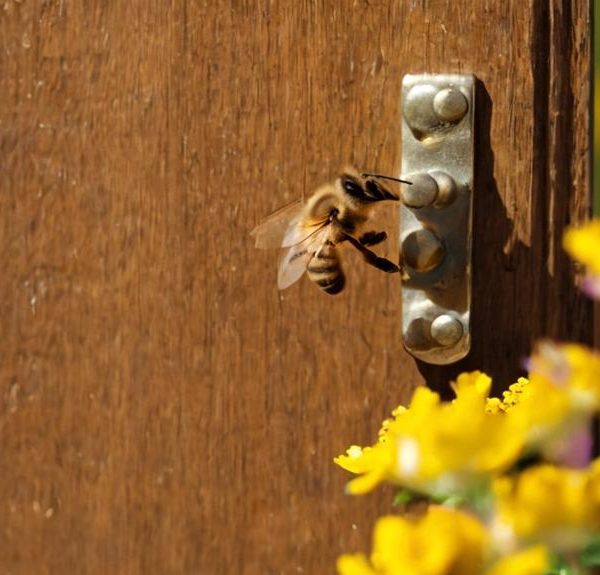Grasp the fascinating science behind why bees and butterflies are irresistibly drawn to flowers, in a dance of survival and necessity.
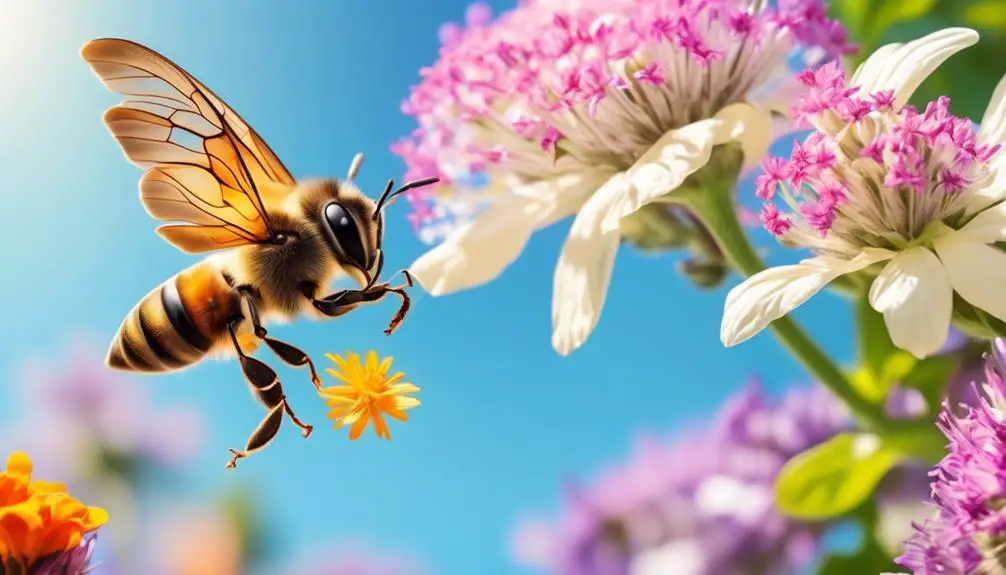
Why Are Bees and Butterflies Attracted to Flowers
Imagine for a moment, you're strolling through a vibrant meadow, the air filled with the soft hum of bees and the gentle fluttering of butterflies as they hop from bloom to bloom. Ever wondered what draws these creatures to the brilliantly colored petals?
It's not just the appeal of the flowers' vivid colors or their intoxicating fragrance. There's a complex, fascinating science behind this natural attraction, a dance of survival and necessity that has implications far beyond the meadow. Intriguing, isn't it?
Well, let's explore this symbiotic relationship further.
Key Takeaways
- Bees and butterflies are attracted to flowers because they need the nectar as an energy source.
- Flowers have evolved traits, such as bright colors and enticing scents, to attract bees and butterflies.
- Pollination is a mutualistic relationship between bees, butterflies, and flowers, as they engage in the transfer of pollen while seeking nectar.
- Bees and butterflies play a crucial role in pollination, which is essential for the reproduction and survival of many plant species.
The Science Behind the Attraction

Let's delve into the fascinating science that explains why bees and butterflies are irresistibly drawn to flowers. You see, this attraction isn't a mere coincidence or a simple preference, but a complex and intertwined relationship that dates back millions of years.
It boils down to a mutualistic relationship. Flowers need pollinators like bees and butterflies to reproduce, while these insects need flower nectar as a primary energy source. To attract them, flowers have evolved specific traits, including bright colors, enticing scents, and even ultraviolet patterns invisible to the human eye.
Besides visual cues, flowers also produce chemical signals. These include volatile organic compounds that waft through the air, enticing bees and butterflies from afar. Once these pollinators reach a flower, they're further drawn in by the taste of nectar, a sweet liquid rich in sugars that provides the energy they need to fly and reproduce.
Role of Flowers in Insect Survival
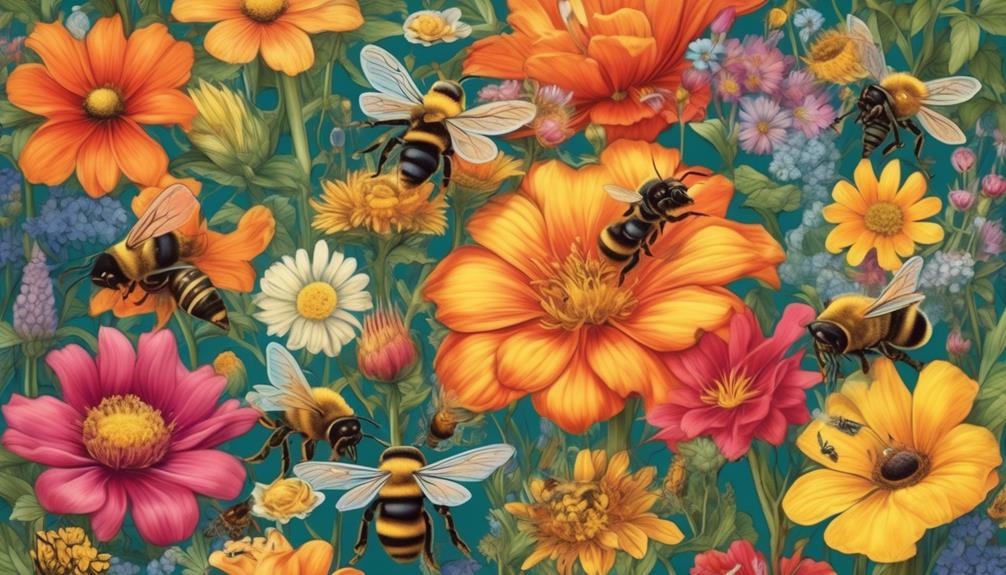
Building on the allure of flowers for pollinators, it's crucial to understand how these blossoms play a pivotal role in the survival of insects like bees and butterflies. You see, flowers aren't just the pretty faces of the plant world. They're the life-support systems for these insects, providing an essential source of food in the form of nectar and pollen.
When foraging, bees collect pollen, a protein-rich food source, for their larvae, and nectar, a sweet liquid providing vital energy and nutrients. Some bees even collect floral oils as a food resource. Butterflies, on the other hand, feed solely on the nectar. They've long, tube-like tongues, or proboscis, specifically adapted for extracting nectar deep within flowers.
Moreover, flowers act as a shelter for insects, protecting them from predators and harsh weather conditions. Insects often lay their eggs in or on flowers, ensuring a food source for their offspring. It's a two-way street. While insects receive nourishment and protection, flowers get pollinated, ensuring their reproduction. It's a symbiotic relationship, one that's been finely tuned over millions of years of co-evolution.
Bees, Butterflies, and Pollination
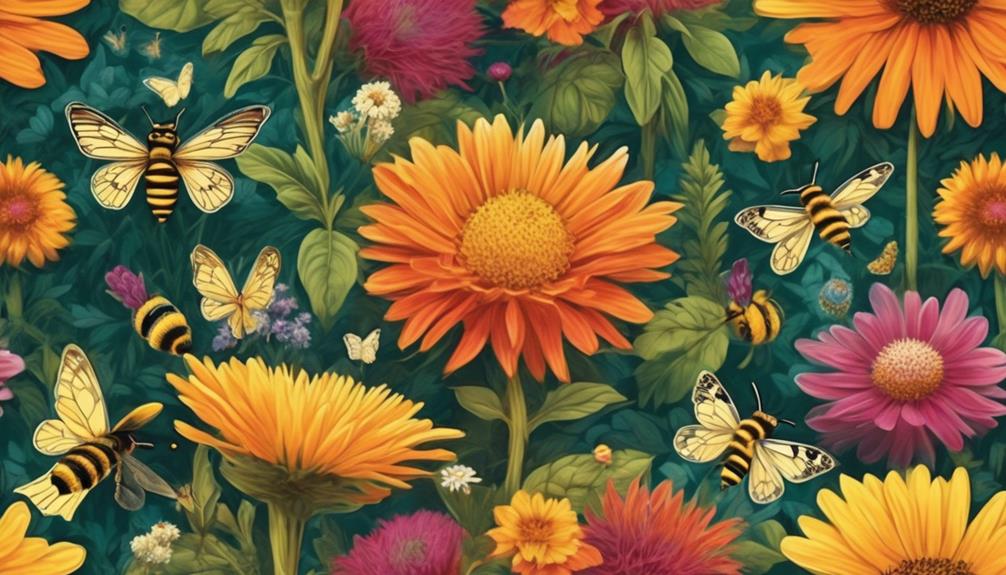
Often, you'll find bees and butterflies busily buzzing and fluttering around flowers, engaged in a critical process known as pollination. This isn't just about them getting their food fix, it's a crucial part of plant reproduction.
Here's how it works. As a bee or butterfly lands on a flower, it's seeking nectar – a sweet liquid that provides the energy they need for flight. While they're there, they inadvertently pick up a dusting of pollen, tiny grains produced by the male parts of a flower. Pollen is sticky, so it clings to the insect's body.
When the insect visits the next flower, some of this pollen rubs off on the female parts, or stigma. This is called cross-pollination. If the pollen grains are compatible, they'll fertilize the flower, leading to the production of seeds and fruit.
Bees and butterflies are great at this. They're attracted to bright, fragrant flowers, and they travel from bloom to bloom, spreading pollen far and wide. So, you see, these insects aren't just beautiful to watch, they're also essential to our ecosystem.
Impact on Ecosystem and Biodiversity
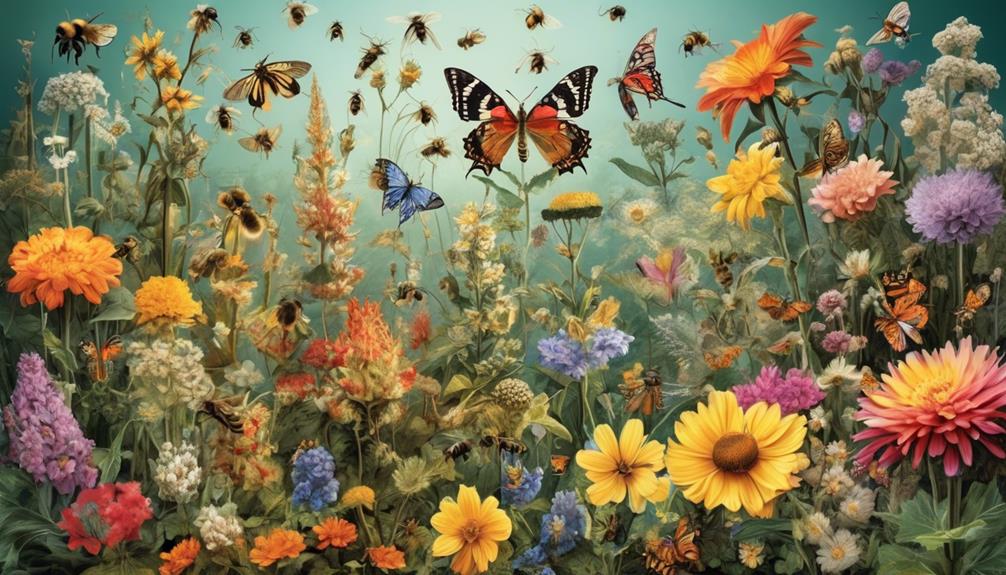
The crucial role of bees and butterflies in pollination has a profound impact on our ecosystem and biodiversity, influencing everything from the growth of wildflowers to the survival of various plant species. You see, these tiny creatures are responsible for the pollination of over 70% of the world's flowering plant species. They're not doing it for us, but their actions are vital for our survival.
When bees and butterflies transfer pollen between plants, they help to facilitate fertilization. This leads to the production of fruit and seeds, allowing plants to reproduce. Without these pollinators, many plants would fail to reproduce and could eventually become extinct. This would disrupt the balance of our ecosystems, as other species that rely on these plants for food and habitat would also be affected.
Moreover, the diversity of plant life supported by pollinators contributes to biodiversity. The different types of plants create a variety of habitats, supporting a wide range of animal species. The loss of pollinators would therefore not only affect plant species but could lead to a decrease in animal diversity as well.
Threats to This Vital Relationship
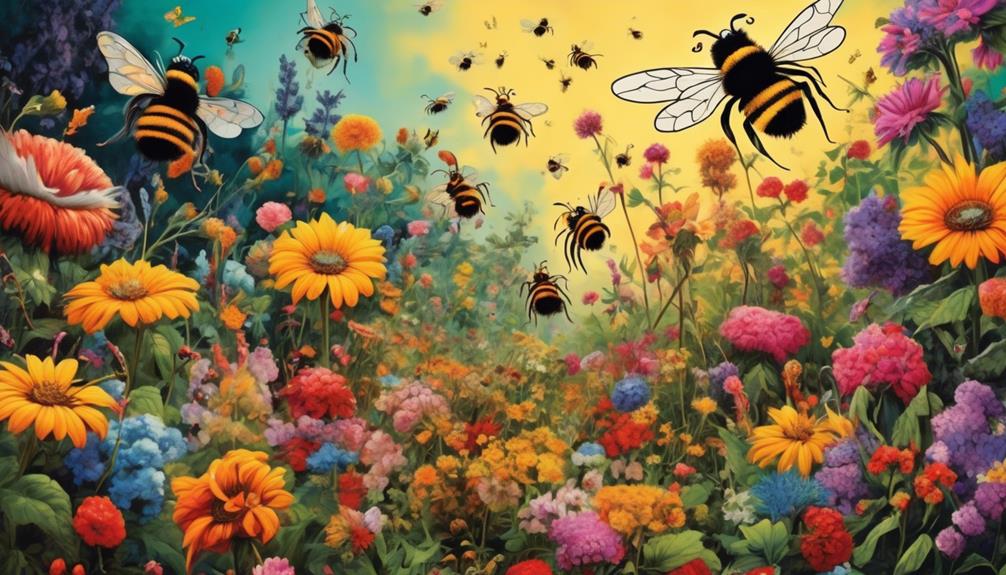
Despite their crucial role in maintaining biodiversity, bees and butterflies are facing increasing threats that jeopardize the vital pollination processes they perform.
You should note that habitat loss due to urbanization, deforestation, and agriculture is a major issue. These activities eliminate the flowers they depend on for nectar and the places they need for nesting and breeding.
Pesticides use is another significant threat. Although they're meant to protect crops from pests, they can poison bees and butterflies, impairing their ability to navigate, collect food, and reproduce.
Climate change also plays a part. Shifts in temperature and precipitation patterns can disrupt the synchronized timing between the blooming of flowers and the life cycles of bees and butterflies.
Invasive species are another concern. They can outcompete native flowers and pollinators, destabilizing ecosystems.
Lastly, diseases and parasites can decimate bee and butterfly populations. Hence, it's crucial to understand these threats to mitigate their impacts and protect these important pollinators.
Frequently Asked Questions
What Other Insects, Apart From Bees and Butterflies, Also Contribute to the Pollination Process?
You're not just looking at bees and butterflies here. There's a whole range of insects that play a part in pollination.
Beetles, for example, pollinate certain types of flowers while they're hunting for food.
Flies, particularly hoverflies, often visit flowers for their nectar and inadvertently transfer pollen.
Even ants can contribute to pollination, though they're not as effective due to their small size.
Do All Types of Flowers Attract Bees and Butterflies or Are There Specific Species They Are Drawn To?
Not all flowers attract bees and butterflies. They're usually drawn to bright, fragrant flowers with abundant nectar and pollen.
Bees, for instance, prefer flowers like lavender and daisies, while butterflies tend to favor aster, phlox, and milkweed. It's also about the flower's shape and the insect's feeding habits.
How Does Climate Change Affect the Relationship Between Bees, Butterflies and Flowers?
Climate change messes with your beloved bees and butterflies. It shifts flowering times, resulting in mismatches between the availability of nectar and the insects' life cycles. Warmer temperatures can also push bees and butterflies' habitats northward, making it tougher for them to find the flowers they love.
You can help by planting a variety of native flowers in your yard to ensure these pollinators have access to nectar, no matter the climate.
Are There Any Unique Adaptations Bees or Butterflies Have Developed to Better Interact With Flowers?
Yes, bees and butterflies have developed unique adaptations to interact better with flowers.
Bees have hairy bodies that trap pollen, aiding in pollination. Additionally, they've evolved a 'waggle dance' to communicate about flower locations.
Butterflies, on the other hand, possess a long proboscis to sip nectar from deep within flowers. Also, they've vibrant wing colors that mimic the flower's hue, camouflaging them against predators.
What Are Some Human Activities That Directly or Indirectly Interfere With the Pollination Process?
You're directly impacting pollination when you use pesticides or clear land for construction. Pesticides can kill or disorient pollinators, while habitat destruction removes their food and nesting sites.
Also, when you plant non-native species, you're indirectly affecting pollination. These plants may not provide the necessary nutrients for local pollinators, or they could outcompete native plants that pollinators rely on.
Conclusion
So, you see, bees and butterflies are drawn to flowers due to a survival instinct. It's a win-win situation where insects get nourishment, and flowers get pollinated. This relationship not only ensures biodiversity but also keeps ecosystems thriving.
However, threats like habitat loss and climate change can disrupt this vital bond. Therefore, it's essential for us to take action, ensuring these crucial pollinators continue to play their part in our world's survival.

